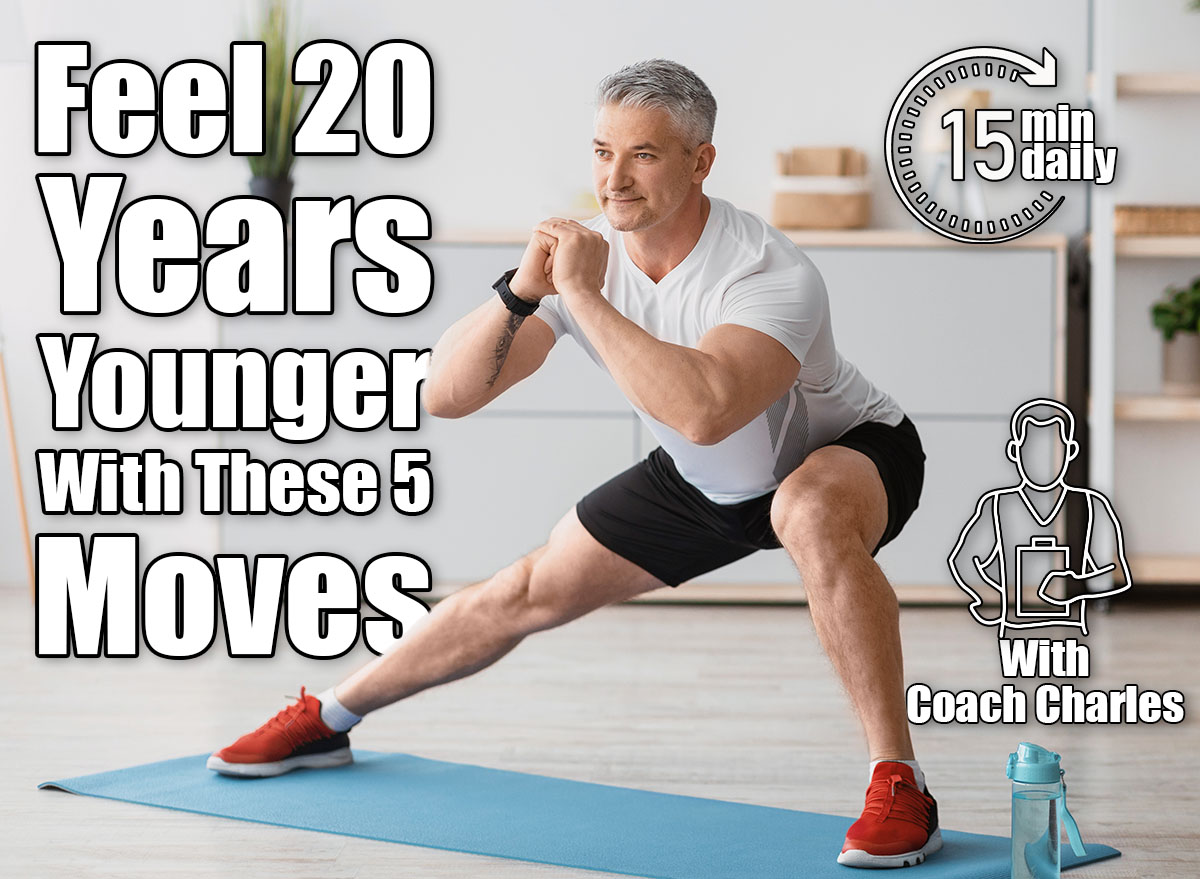If you want to lead a healthy, independent life, strength training should be a non-negotiable part of your routine. This form of exercise supports joint health, boosts muscle mass, and improves posture while reducing inflammation and stiffness—all crucial as you get older. To help you stay strong and mobile, we spoke with a trainer who shares the best strength habits that will make you feel 20 years younger. (You can thank us later!)
“Studies show that muscle mass is directly correlated with a longer lifespan,” explains Charles Toliver, certified trainer at Planet Fitness. “Individuals who do not strength train tend to lose muscle and collagen more rapidly with age, making them more vulnerable to chronic conditions like diabetes, heart disease, and osteoporosis.”
Below, Charles breaks down five essential strength habits that will make you feel 20 years younger.
5 Strength Moves To Feel 20 Years Younger
Begin With Mobility Work


Before diving into strength training, Charles recommends focusing on mobility.
“Mobility work warms up your joints and activates key muscle groups,” Charles explains. “It improves circulation, enhances balance, and preps for heavier lifts, reducing injury risks. It keeps your joints strong, prevents stiffness, and helps you move with more freedom and control, like you may have done in your 20s!”
Be Mindful of the Tempo of Every Rep


The tempo of your reps matters!
According to Charles, “Slowing down your reps builds control and increases time under tension. It also increases time under tension, which recruits more muscle fibers and deepens the mind muscle connection. It promotes healthy joints, stronger tendons, and faster visible results, making your body look and function younger.”
Emphasize Basic Movement Patterns


Foundational movements like hinges, pushing, pulling, squats, and carries challen daily actions and boost real-world strength.
“Additionally, twisting the torso to activate the obliques strengthens and increases mobility in the spine, preventing stiffness and muscle imbalances,” Charles tells us. “This will help improve daily function, posture, and coordination, helping you feel strong, stable, and confident in your movements.”
Always Stretch After Working Out


Engaging in post-workout stretching is easily overlooked—but it shouldn’t be. In fact, it helps keep your body limber.
“Static stretching post-workout helps muscles recover, reduces soreness, and improves joint flexibility,” Charles says. “For youth benefits, it reduces tightness, prevents injuries, and keeps you feeling loose and agile instead of stiff and achy.”
Get Solid Rest


Optimizing your bedtime to routine to promote a good night’s rest is essential in helping your body recover.
“Without proper sleep, your body can’t repair or rebuild muscle,” Charles explains. “Overtraining without rest accelerates aging and limits results. Quality sleep of seven to eight hours leads to faster recovery, better hormonal balance, and improved energy, helping you look and feel years younger.”
















Leave a Reply